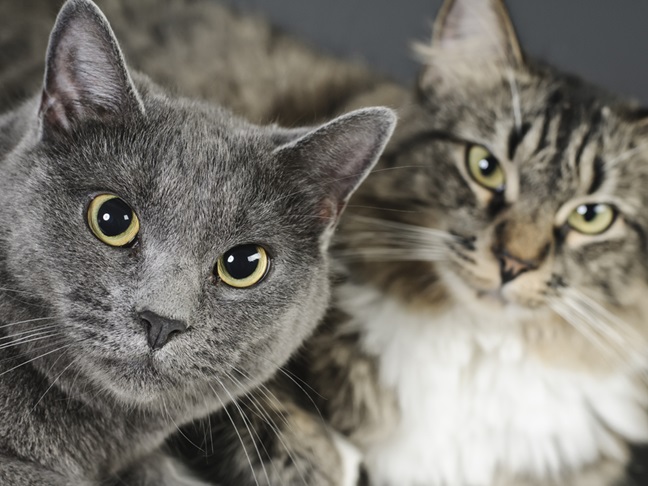When Cats Don’t Get Along
Picture this: You work in an office with two other people. One of them is friendly but keeps to herself and doesn’t invade your space in any way. At 5:00 she leaves and goes home with a simple “goodbye” and a smile.
The second one insists on wearing an awful sickly-sweet perfume that gives you a headache. She’s constantly on the phone talking loudly to her boyfriend, and insists upon throwing her trash in your bin. You can’t stand her, but at 5:00, at least you can get up and escape this unbearable situation in office until the next day.
Now transfer this situation onto your multi-cat household at home.
You have three cats. Two of them get along and will lie washing one another and even engage in playful, albeit boisterous games. But they are petrified of the third cat that is always trying to invade their space, ambushing them in the litter box and chasing them around the house.
Come 5:00, and, well, nothing changes. There’s nowhere for the two cats to go to escape this feline torment. It’s stressful, and, often can result in behavioral issues. In these situations, often the tormenter will lose her home and wind up in a shelter simply because she’s not getting alone with the others.
Why Cats Sometimes Don’t Get Along
In actual fact, if you consider how felines handle relationships with other felines in an unmanaged cat community, none of the cats are at fault here.
According to Margaret M. Duxbury, DVM, DACVB of The University of Minnesota Veterinary Behavior Service at the College of Veterinary Medicine, University of Minnesota, St. Paul, MN, studies have shown that unmanaged cats in a natural outdoor environment may regularly explore from as little as one acre to over 400 acres. Such cats are highly social within their own groups, but tend not to interact amicably with cats they do not know.
“Feline social groups typically consist of related individuals (females and their offspring) and are resistant to new members.
“In a restricted household environment where there is little room to roam and where they do not even have the benefits of predatory stimulation and exercise, the problem with dealing with newcomers is exacerbated.
“Limited physical space exacerbates conflict between unbonded household cats that might choose to avoid each other in more open and complex environments, but who are forced to cope with close proximity encounters with a cat perceived as an intruder,” explains Duxbury.
“Consequently, household cats, and especially those that are brought together as adults, may not form affiliative relationships despite years of living together.”
